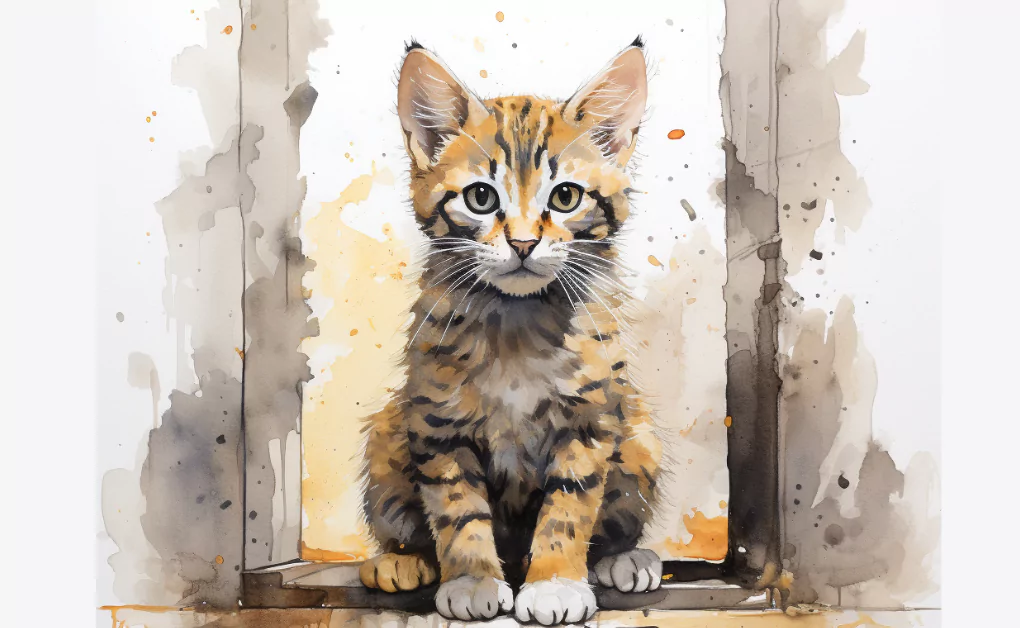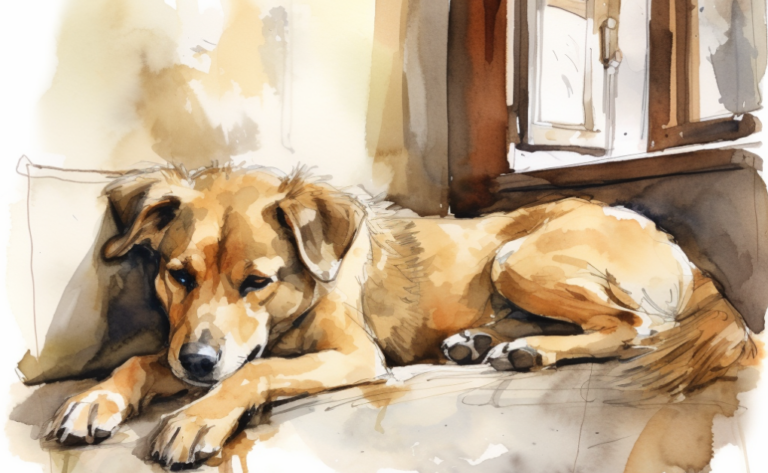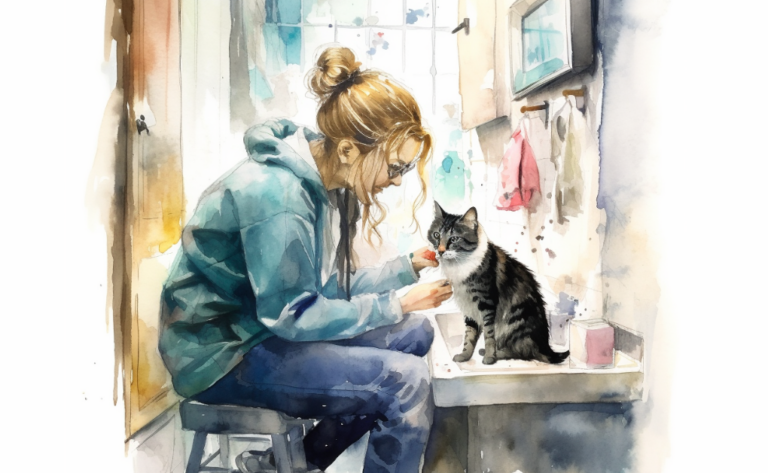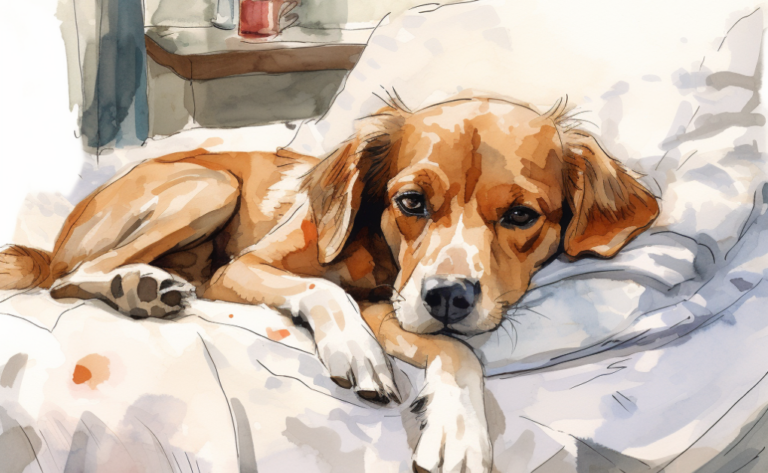What is Uveitis in Cats?
What is it?
How is it Treated?
Breed Predispositions
There are no specific breeds of cats that are predisposed to uveitis. It can occur in cats of any breed or age.
Introduction
When Sarah noticed her normally curious and agile cat, Whiskers, was acting lethargic and seemed to avoid bright lights, she knew something wasn’t right. She was alarmed to see redness and cloudiness in Whiskers’ eyes, prompting an urgent visit to the veterinarian. It was there that Sarah learned her beloved cat was suffering from uveitis. This blog post will explore the complex world of uveitis in cats, providing insights into the causes, symptoms, and treatments for this potentially severe eye condition.
Uveitis in cats refers to the inflammation of the uvea – a crucial part of the eye encompassing the iris, ciliary body, and choroid. This condition arises when certain internal mechanisms within the eye instigate inflammation within these structures. The severity of uveitis can vary, affecting either one or both eyes. Given the uvea’s vital role in overseeing the eye’s operations and maintaining its well-being, the onset of uveitis can disrupt these functions, leading to discomfort and possible complications. It’s crucial to promptly identify the signs of uveitis to seek suitable veterinary care.
Management of uveitis focuses on addressing the underlying causes of feline uveitis, which are numerous and often related to infections, such as T. gondii, to which cats can get infected. The treatment strategy also includes mitigating inflammation and safeguarding the cat’s ocular health. Keratic precipitates, small inflammatory deposits, may appear on the posterior segment of the eye, indicating inflammation.
Keeping a check on eye pressure is also important, as uveitis can alter it. Timely intervention and consistent care are indispensable to prevent further complications and sustain the cat’s visual health.
What is the Uvea?
The uvea (pronounced oo-VEE-uh) is a thin layer of tissue between the iris and cornea of the eye. The uvea contains blood vessels and nerves that help regulate the body’s temperature. Uveitis occurs when this delicate area becomes inflamed.
The uvea is divided into three layers: the anterior chamber, the posterior chamber, and the vitreous humor.
When cats develop Uveitis, the result is usually painless redness and swelling of the eyes. This condition may be temporary or permanent.
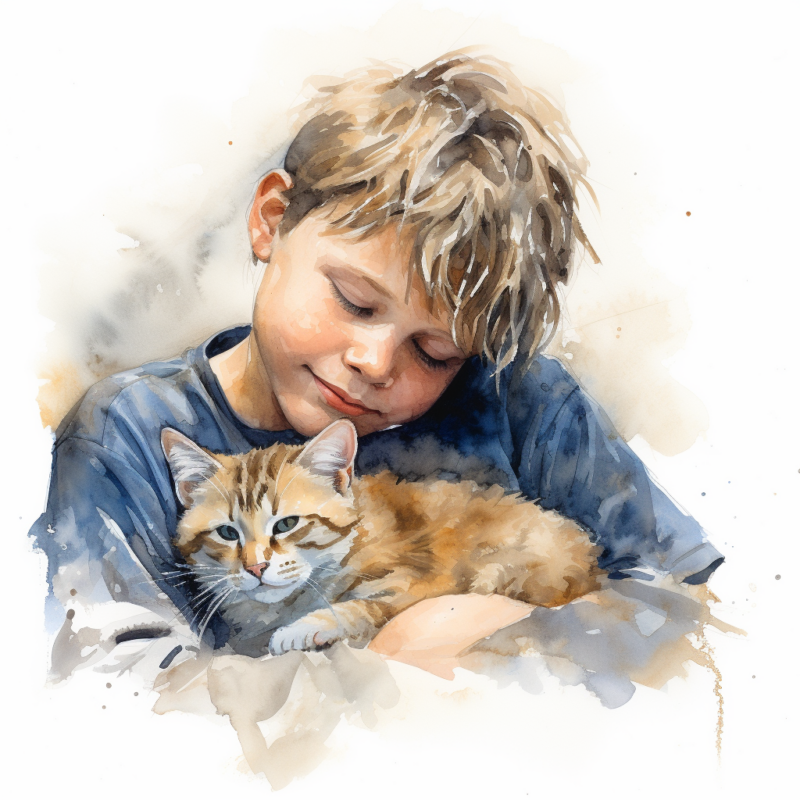
Types of Uveitis in Cats
Uveitis in cats can be classified into different types based on the affected eye area or the underlying cause. Understanding the types of uveitis can help diagnose and manage the condition effectively. Here are some common types of uveitis in cats:
Anterior Uveitis
Anterior uveitis refers to inflammation of the front part of the eye, which includes the iris and ciliary body. It can cause symptoms such as redness of the eye, squinting, increased tear production, and a change in the color of the iris. Anterior uveitis is commonly associated with infectious causes like feline herpes virus, toxoplasmosis, or bacterial infections. Trauma, autoimmune diseases, or systemic conditions such as hypertension or feline leukemia virus can also cause it.
Posterior Uveitis
Posterior uveitis affects the back of the eye, including the choroid and retina. It may cause symptoms like blurry vision, light sensitivity, or a pupil size change. Posterior uveitis can be associated with feline infectious peritonitis (FIP), toxoplasmosis, or viral infections. It can also occur due to immune-mediated conditions, neoplastic diseases, or systemic disorders.
Panuveitis
Panuveitis involves inflammation of all layers of the eye, including the anterior, posterior, and intermediate parts. It is characterized by symptoms like severe eye redness, pain, cloudiness of the cornea, and decreased vision. Panuveitis can be caused by infectious agents such as Bartonella henselae or systemic diseases like systemic lupus erythematosus (SLE), feline immunodeficiency virus (FIV), or lymphoma.
Granulomatous Uveitis
Granulomatous uveitis is characterized by granulomas, small nodules composed of inflammatory cells. It can occur due to infectious diseases like FIP or fungal infections. Granulomatous uveitis can also be seen in immune-mediated conditions such as sarcoidosis or certain forms of lymphoma.
Lymphocytic Plasmacytic Uveitis
Lymphocytes and plasma cells characterize lymphocytic plasmacytic uveitis in the eye. It is often associated with immune-mediated or autoimmune conditions such as feline idiopathic cystitis, systemic lupus erythematosus (SLE), or immune-mediated polyarthritis.
What are the Causes of Uveitis in Cats?
The etiology of uveitis in cats is quite diverse, and it can stem from various sources, including infectious diseases, immune-mediated conditions, and even physical trauma. Here’s a breakdown of some commonplace causes:
1. Infections
Feline Herpesvirus-1 (FHV-1), a frequent viral infection in cats, can trigger uveitis during the respiratory or ocular manifestations of the ailment. Other retroviruses, like Feline Leukemia Virus (FeLV) and Feline Immunodeficiency Virus (FIV), can compromise the immune system, making felines more prone to secondary infections, such as bacterial infection, which can lead to uveitis. Cats may also get uveitis from exposure to Toxoplasma gondii, a protozoan parasite found in infected intermediate hosts or contaminated food.
2. Trauma and Injury
Eye injuries from penetrating foreign objects or blunt trauma can incite ocular inflammation, leading to uveitis. In these cases, a corneal ulcer may form, altering the aqueous humor flow, leading to primary or secondary glaucoma, thus increasing intraocular pressure.
3. Immune-Mediated Disorders
An immune component often involves feline idiopathic uveitis, whose cause remains unidentified. Other systemic autoimmune conditions, like systemic lupus erythematosus (SLE), can also result in ocular inflammation and uveitis.
4. Neoplasia
Intraocular tumors, originating within the eye or spreading from nearby structures, can lead to uveitis. Lymphoma is a common neoplastic cause of uveitis in cats.
5. Systemic Diseases
Systemic ailments like hypertension can affect the eye’s blood vessels, resulting in uveitis. Other systemic infectious diseases like Bartonella henselae or systemic fungal infections can also trigger uveitis. In severe cases, rubeosis iridis, which involves abnormal blood vessel growth in the eye, may occur.
Please note this list is not all-encompassing. There are less common causes, such as bilateral uveitis, and other underlying conditions that can contribute to a cat’s eye problems, including uveitis. Identifying the root cause of feline uveitis is essential for the right treatment and management. Should your cat display signs of uveitis, it’s crucial to seek a comprehensive evaluation and diagnosis from a veterinarian.
Symptoms of Cats with Uveitis
Clinical signs indicative of uveitis in cats encompass a variety of symptoms. These include:
- An apparent redness or swelling in the eye, hinting at inflammation or potentially uveitis secondary to another condition.
- The presence of excessive tearing or a watery eye, which could indicate discomfort and is common in eye problems. A tendency to squint or keep the eye partially closed is often associated with light sensitivity or photophobia.
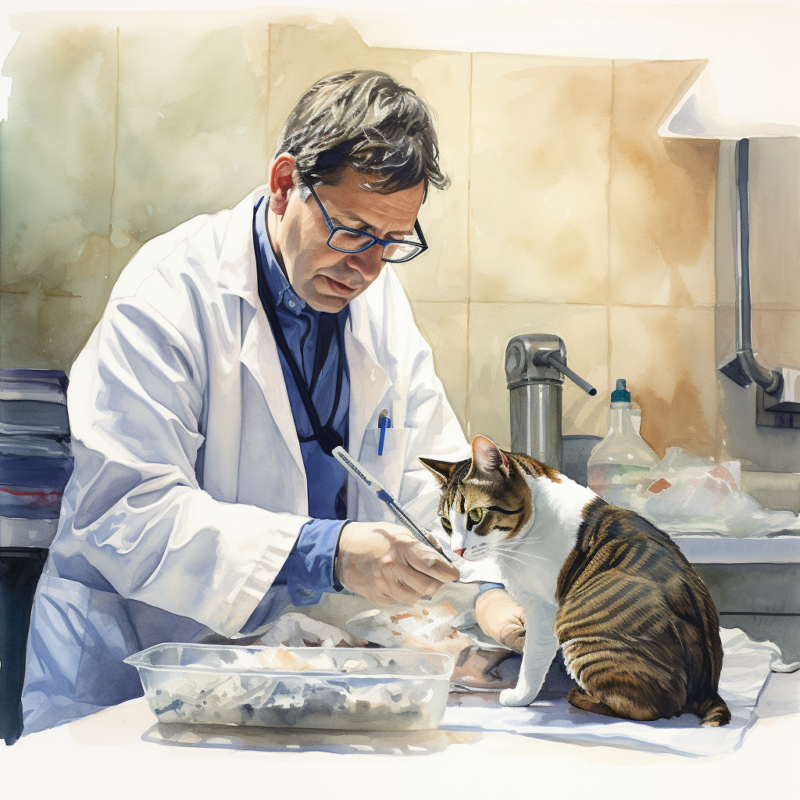
- Discharge originating from the affected eye, which can vary in appearance.
- Noticeable cloudiness or alteration in the overall look of the cat’s eye.
- Changes in behavior or a decreased appetite, which might signify the cat is experiencing pain.
- Vision alterations or loss, which can manifest in cats with uveitis and may result in unusual or cautious behaviors.
These clinical signs of anterior uveitis are important indicators of potential health issues. If your cat exhibits any of these signs, immediate veterinary attention should be sought for a thorough evaluation and appropriate treatment.
Diagnosing Uveitis in Felines
Identifying uveitis in cats necessitates a thorough assessment that involves the cat’s medical history, a physical examination, and specific diagnostic procedures. These steps are vital to uncovering the root of the eye problem and determining the proper treatment approach:
Medical History and Physical Assessment:
- Comprehensive History: The veterinary ophthalmologist will gather data regarding the cat’s symptoms. This will include details about the duration and progression of the eye-related signs, past ocular issues, overall health, and potential exposure to environmental triggers or infectious agents.
- Physical Check-up: The veterinarian will conduct an exhaustive physical examination, focusing significantly on the cat’s eyes. They will scrutinize the eyes’ appearance, evaluate the cat’s vision, and search for abnormalities or inflammation signs.
Eye Examination:
- Slit-lamp Biomicroscopy: This specialized examination method enables the veterinarian to thoroughly inspect the eye’s structures using a slit-lamp biomicroscope. It assists in recognizing inflammation signs such as redness, swelling, cellular infiltrates, or changes in the iris, lens, and retina, which are characteristic ocular manifestations of uveitis.
- Gonioscopy: This technique allows for visualization and evaluation of the anterior chamber’s angle to detect any irregularities contributing to uveitis.
Laboratory Analysis:
- Complete Blood Count (CBC) and Biochemical Profile: These tests deliver crucial information about the cat’s overall health and can help uncover any underlying systemic diseases related to uveitis.
- Serological Tests: If a particular cause of uveitis is suspected, serological examinations may be conducted to confirm the presence of specific infectious agents such as the feline immunodeficiency virus (FIV), feline leukemia virus (FeLV), Toxoplasma gondii, or other pathogens.
- Urine Evaluation: A urine test may be performed to assess kidney function and rule out systemic causes of uveitis.
Eye Imaging:
- Ocular Ultrasonography: This imaging procedure utilizes sound waves to inspect the eye’s interior structures, including the retina and vitreous. It can aid in identifying abnormalities or inflammation, such as uveal tract abnormalities and corneal edema, not detectable during the physical examination.
- Fluorescein Staining: The application of fluorescein dye can help evaluate the cornea’s integrity and uncover any corneal ulcers or erosions.
Cytological and Microbiological Examinations:
- Ocular Cytology: Acquiring a sample from the eye through fine-needle aspiration or impression cytology can assist in identifying inflammatory cells or infectious agents in the eye.
- Microbiological Culture and Sensitivity Test: If an infection is suspected, samples can be sent for culture and sensitivity testing to recognize the responsible pathogen and determine the most effective antibiotic treatment.
Arriving at an accurate uveitis diagnosis is critical for determining the right treatment and management strategy for cats with uveitis. The veterinary ophthalmologist will integrate the findings from the medical history, physical examination, and diagnostic tests to uncover the underlying cause of uveitis and devise a personalized treatment plan for the affected cat.
Treatment for Uveitis in Cats
There exists a range of treatment strategies for addressing uveitis in cats. The chosen method hinges on the root cause, inflammation intensity, and unique factors pertaining to the cat. Here are various treatments often employed for cat uveitis:
Topical Remedies:
- Corticosteroids: These anti-inflammatory substances are typically provided as eye drops or ointments. They aim to mitigate inflammation and soothe symptoms linked to uveitis.
- Nonsteroidal Anti-inflammatory Drugs (NSAIDs): These medicines could be used with corticosteroids or as alternatives to combat inflammation and alleviate discomfort.
- Immune-Modulating Medications: Some cats may find relief with medications designed to moderate the immune response and reduce inflammation.
Systemic Remedies:
- Oral Corticosteroids: In cases where uveitis is more severe, systemic corticosteroids could be recommended for superior inflammation control. Given orally, these medicines necessitate close observation due to potential adverse effects.
- Immunosuppressive Medications: Cats experiencing immune-mediated uveitis might be prescribed immunosuppressive drugs such as cyclosporine or azathioprine to inhibit the abnormal immune reaction.
Pain Management Strategies:
- Analgesics: Medications to manage pain can be used to lessen the discomfort associated with uveitis. Non-steroidal analgesics or opioids can be recommended based on the cat’s specific needs and the intensity of the discomfort.
- Local Anesthetics: Under certain circumstances, local anesthetics may numb the eye and offer temporary relief from immediate discomfort.
Supportive Measures:
- Warm Compresses: Warm compresses to the affected eye can help decrease swelling and soothe discomfort.
- Eye Protection: In some cases, protective eyewear like an Elizabethan collar (E-collar) or a specific eye shield might be suggested to avert further injury and foster eye healing.
- Environmental Management: Constructing a serene and stress-free environment can support the cat’s recovery and minimize potential triggers that could aggravate uveitis.
It’s crucial to highlight that the treatment of uveitis will be customized to meet each cat’s specific requirements and might necessitate a combination of different strategies. Regular follow-up visits with the veterinarian are imperative to evaluate the cat’s reaction to therapy for uveitis, monitor any adverse effects, and make necessary adjustments. The goal of systemic treatment and topical eye medication, whether specific therapy for an infectious disease or not, is to lessen inflammation, manage discomfort, and control the root cause to facilitate healing and maintain the cat’s ocular health. It should also be noted that these treatments are commonly performed since uveitis can be a recurrent issue in cats.
Prevention of Feline Uveitis
Preventing uveitis in cats can be challenging as it often arises from underlying conditions or infections. However, there are some steps pet owners can take to help minimize the risk and protect their cats’ eye health:
- Regular Veterinary Care: Schedule routine veterinary visits for your cat to ensure they receive comprehensive wellness exams. This allows your veterinarian to monitor their overall health and detect any early signs of systemic diseases or infections that could potentially lead to uveitis.
- Vaccinations: Ensure your cat is current on all recommended vaccinations, particularly those that protect against uveitis, such as feline herpesvirus and toxoplasmosis. Vaccinations can help prevent or reduce the severity of infections that may lead to uveitis.
- Parasite Prevention: Use appropriate preventative measures to protect your cat from fleas, ticks, and other parasites. These pests can transmit diseases that may result in uveitis. Consult your veterinarian to determine the most suitable preventive products for your cat.
- Prompt Treatment of Infections: If your cat develops an infection, particularly in the respiratory or gastrointestinal tract, seek prompt veterinary attention and follow the prescribed treatment plan. Timely treatment can help prevent the spread of infection to the eyes and reduce the risk of uveitis.
- Avoid Trauma: Take precautions to minimize the risk of eye trauma for your cat. Keep them indoors or provide a safe and supervised outdoor environment. Prevent access to hazardous areas or objects that may cause eye injury. Regularly inspect their environment for potential hazards.
- Monitor Overall Health: Be vigilant about your cat’s health and well-being. Maintain a balanced diet, provide fresh water, and engage in regular play and exercise. Obesity and other systemic health conditions can increase the risk of uveitis, so promoting a healthy lifestyle is beneficial.
It’s important to note that while these preventive measures can reduce the risk of uveitis to some extent, some causes, such as genetic predispositions or immune-mediated conditions, cannot be entirely prevented. Regular veterinary care and early intervention are crucial in detecting and managing uveitis promptly, potentially minimizing its impact on your cat’s vision and overall health.
Frequently Asked Questions
Disclaimer: The information provided on this veterinary website is intended for general educational purposes only and should not be considered as a substitute for professional veterinary advice, diagnosis, or treatment. Always consult a licensed veterinarian for any concerns or questions regarding the health and well-being of your pet. This website does not claim to cover every possible situation or provide exhaustive knowledge on the subjects presented. The owners and contributors of this website are not responsible for any harm or loss that may result from the use or misuse of the information provided herein.

